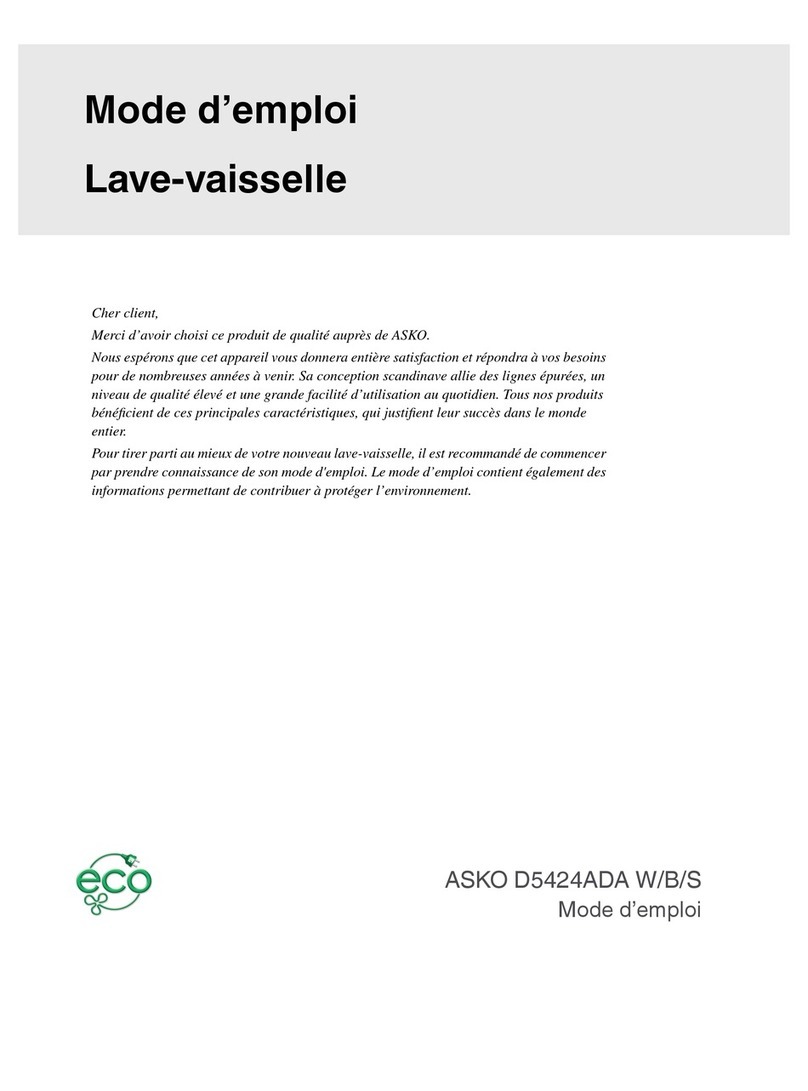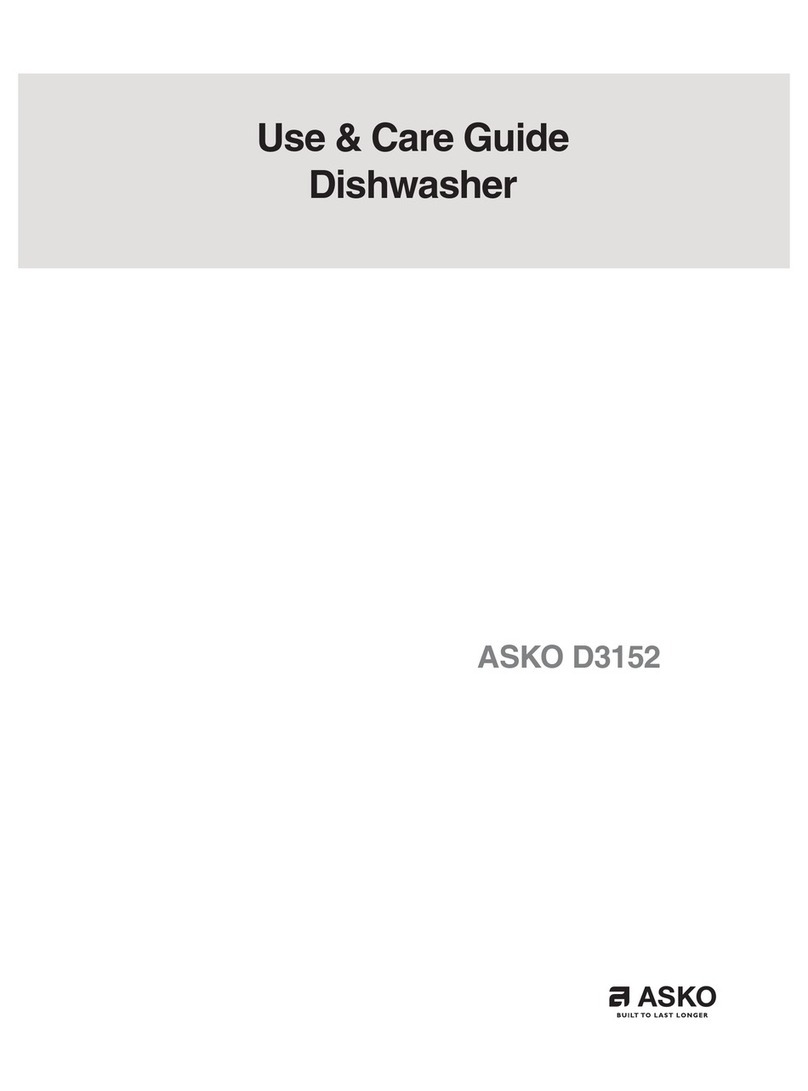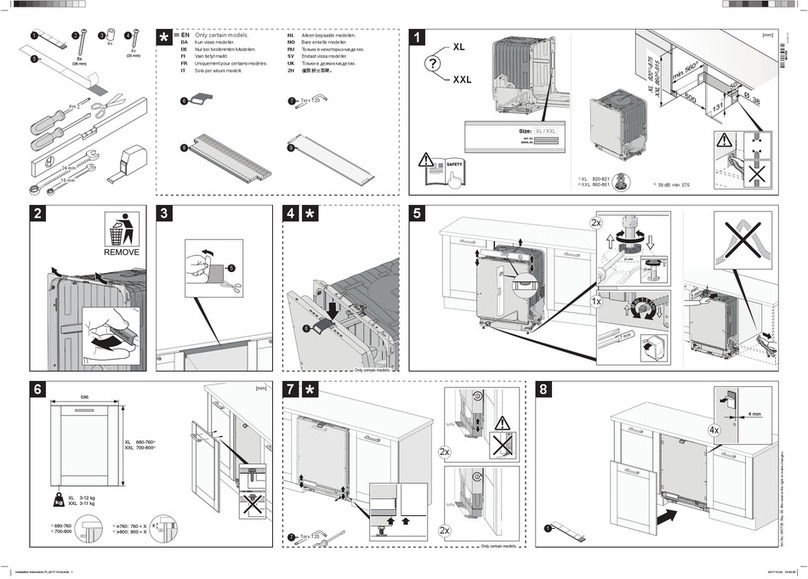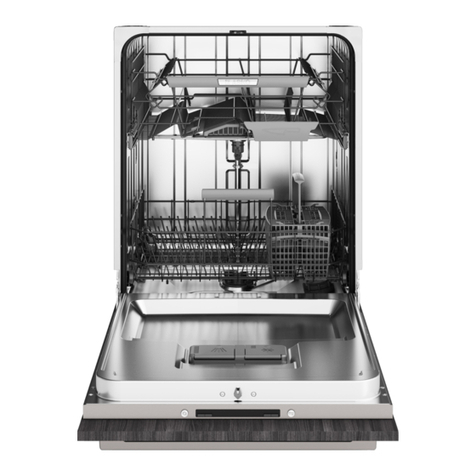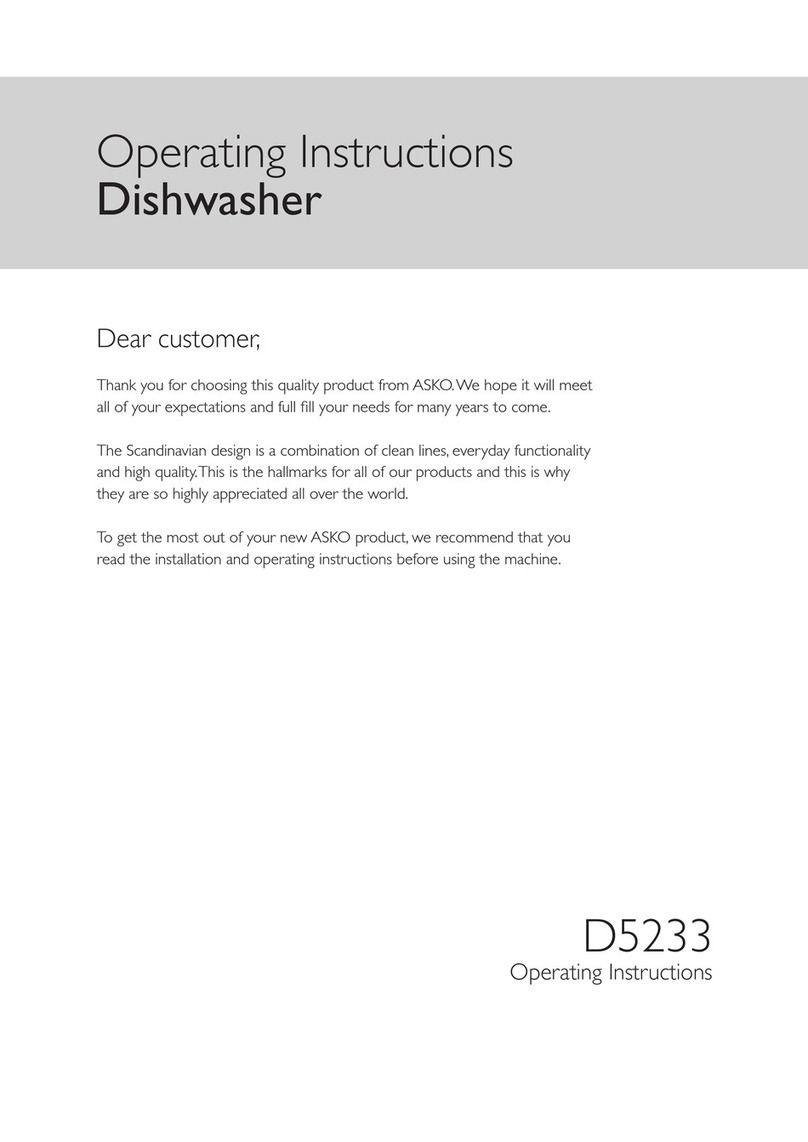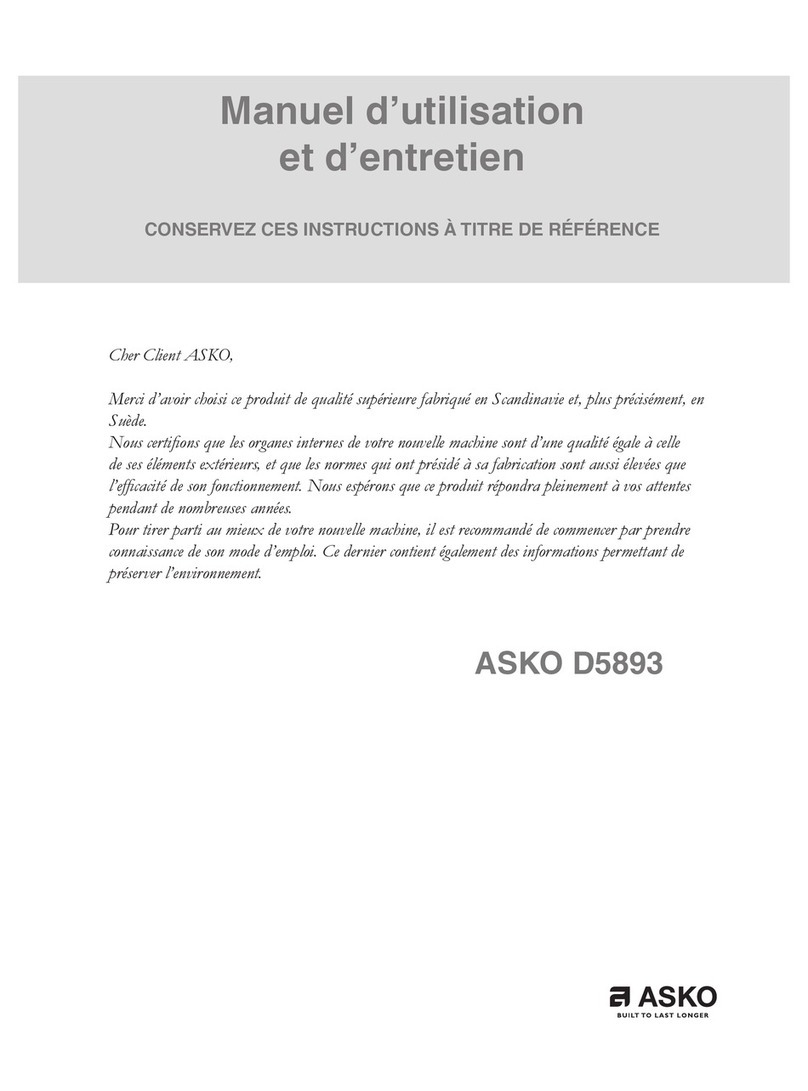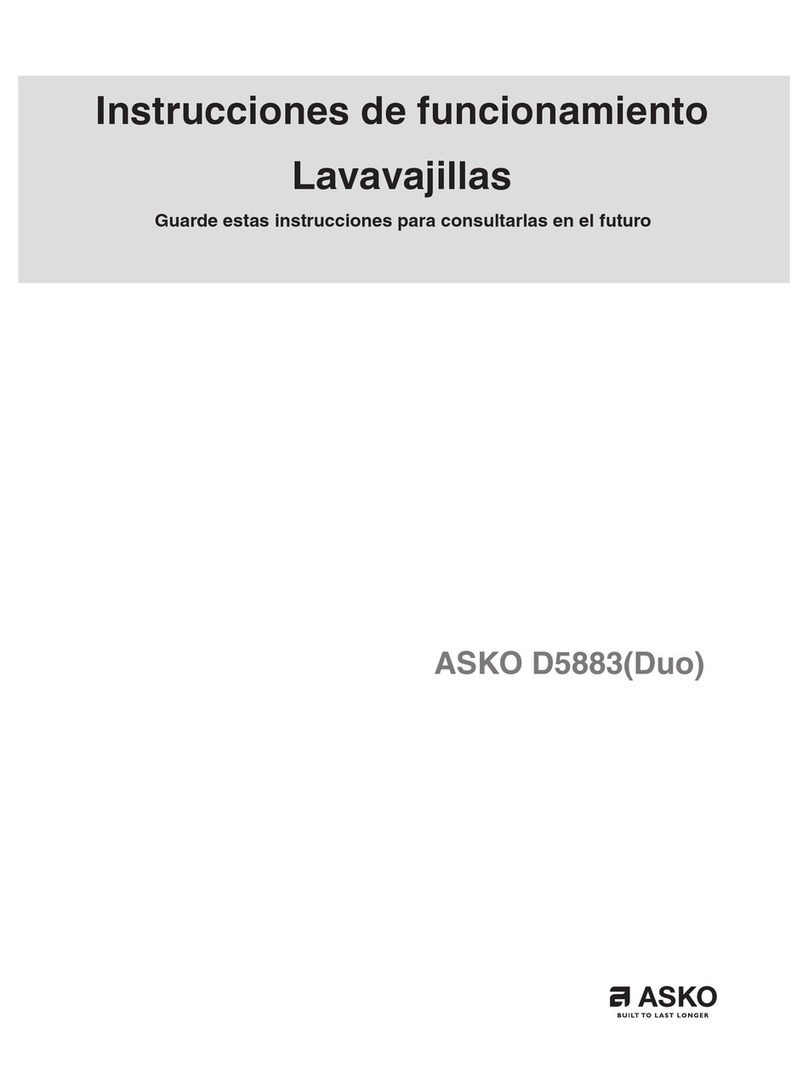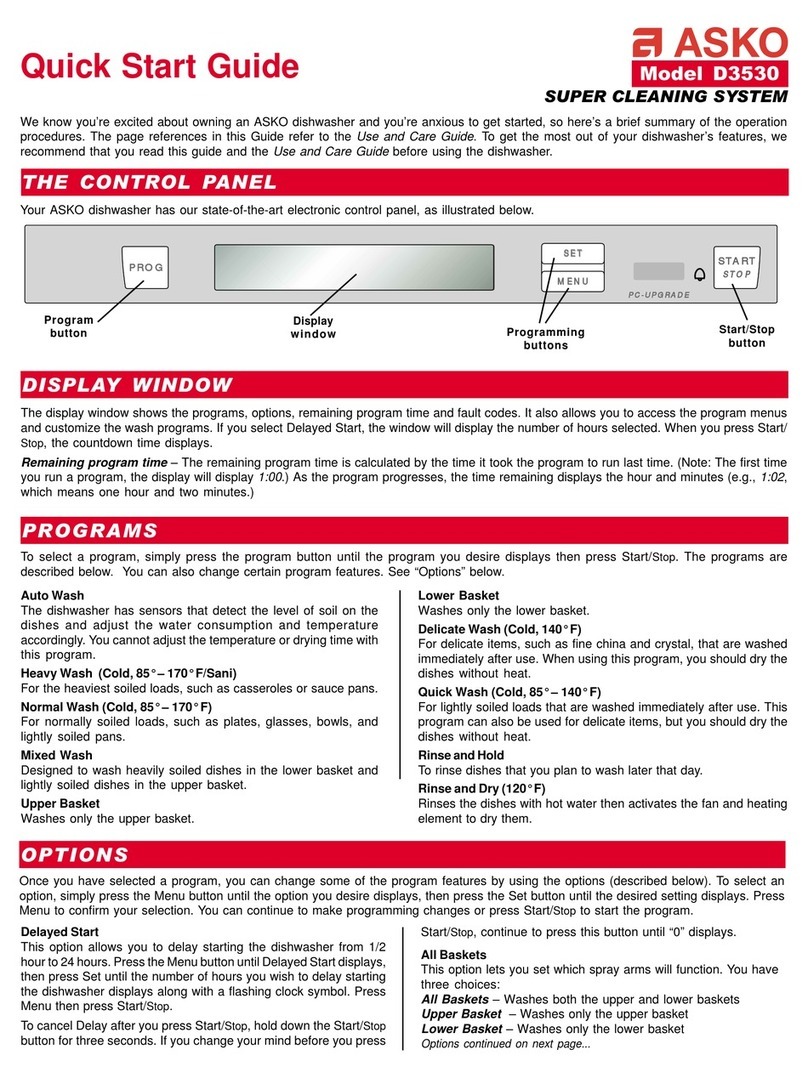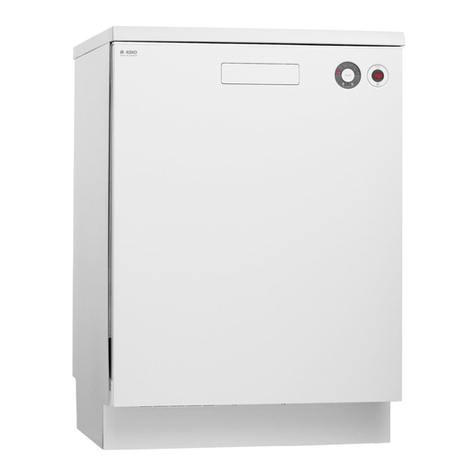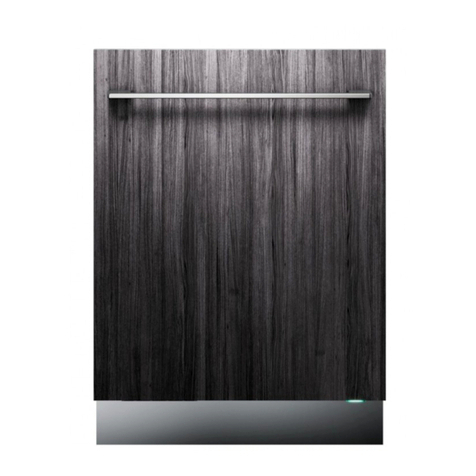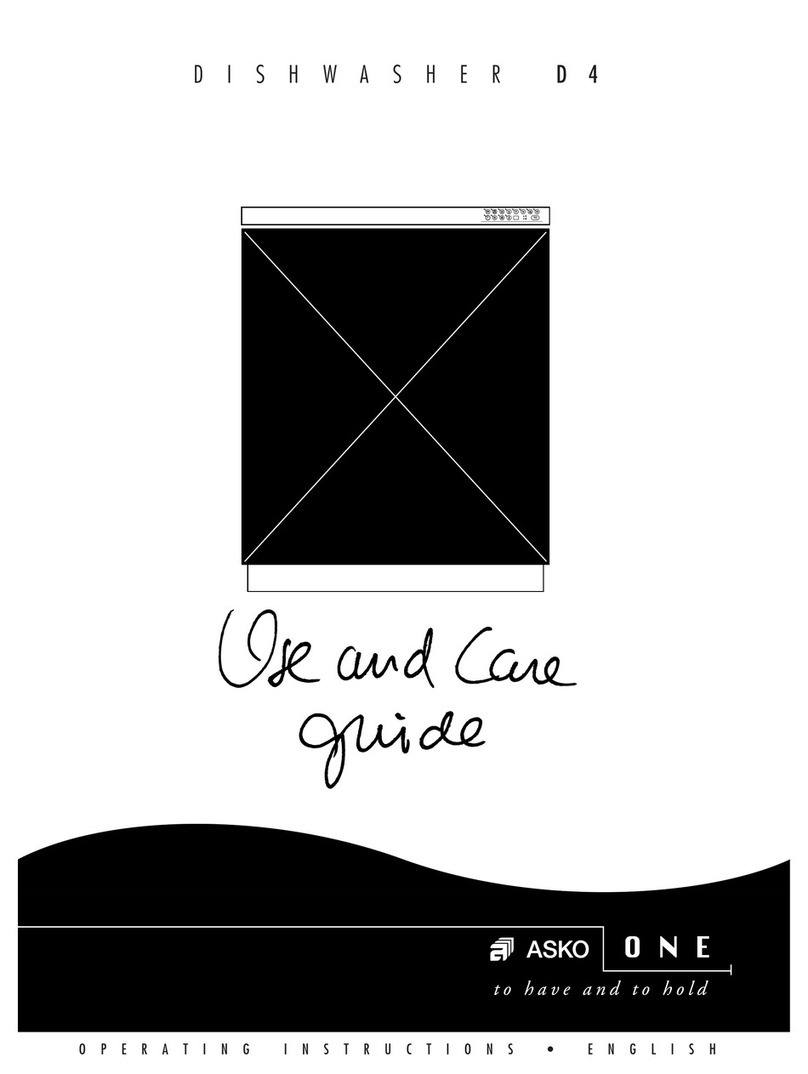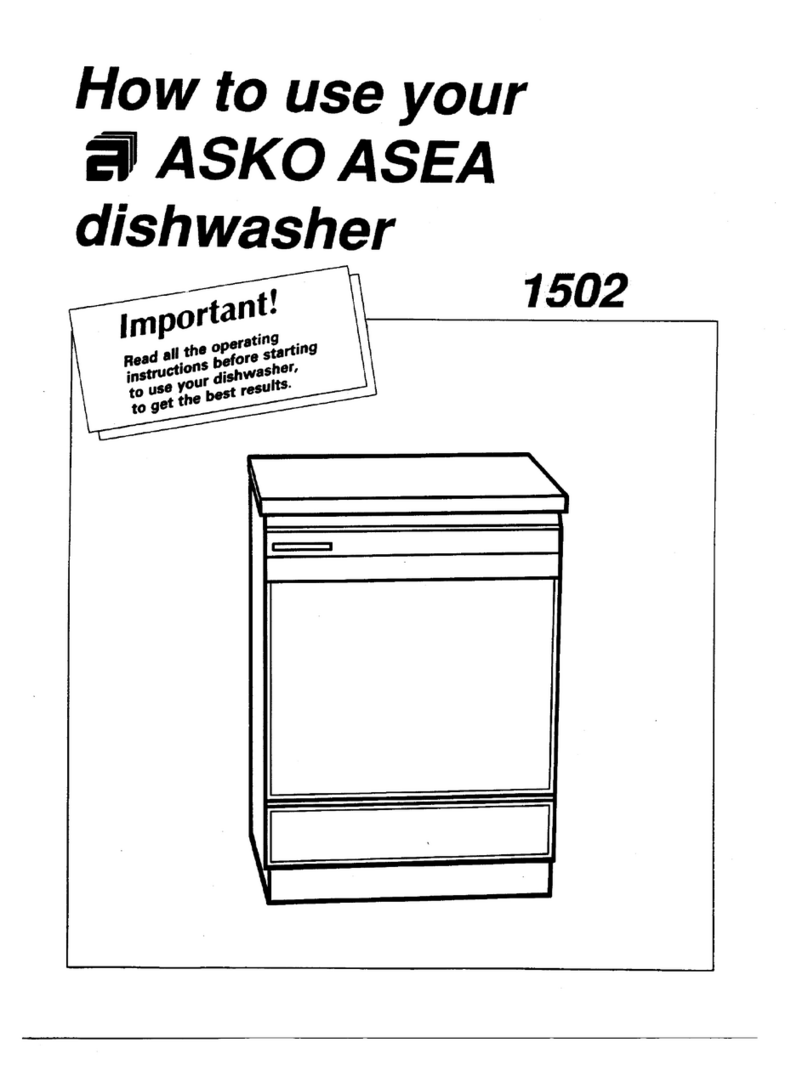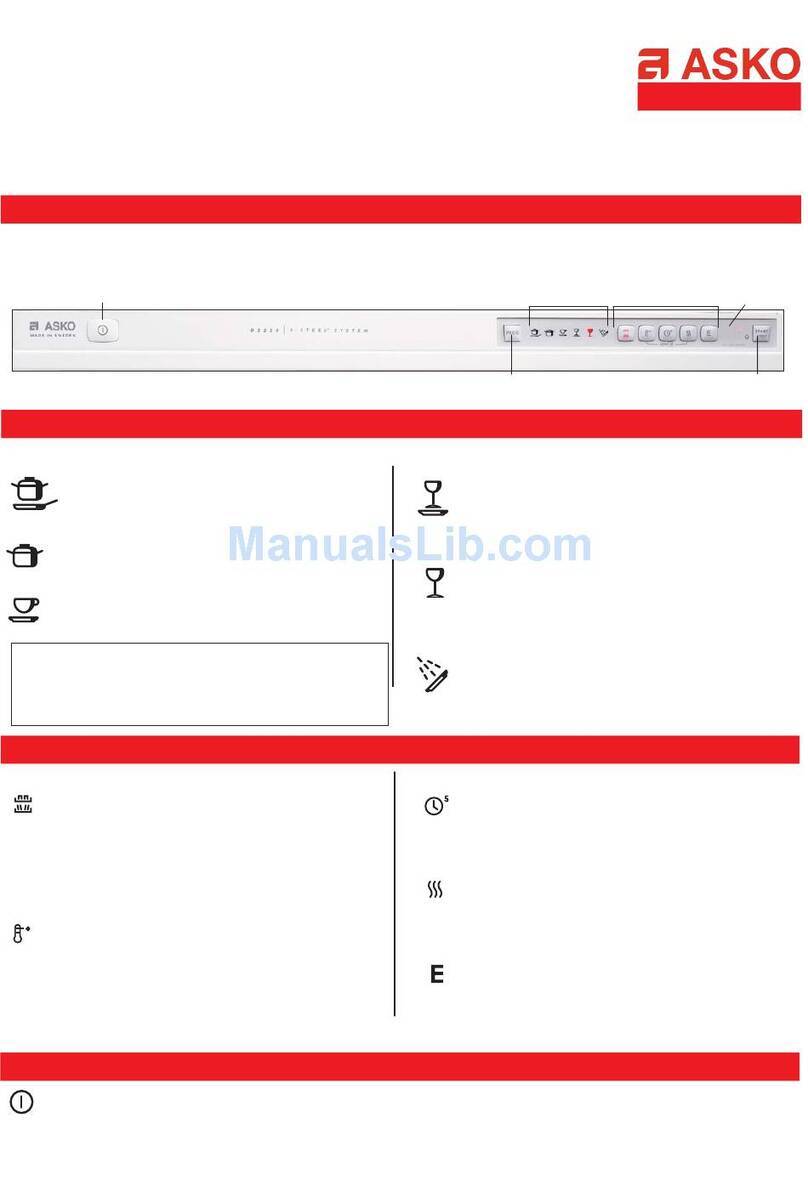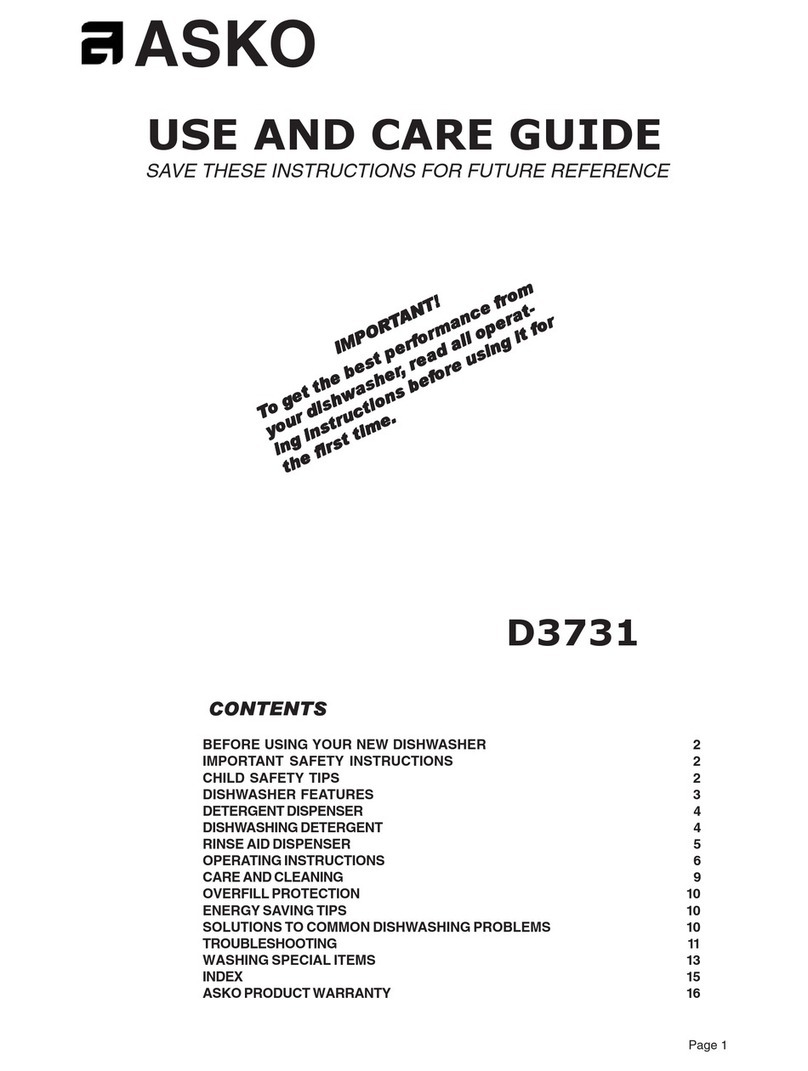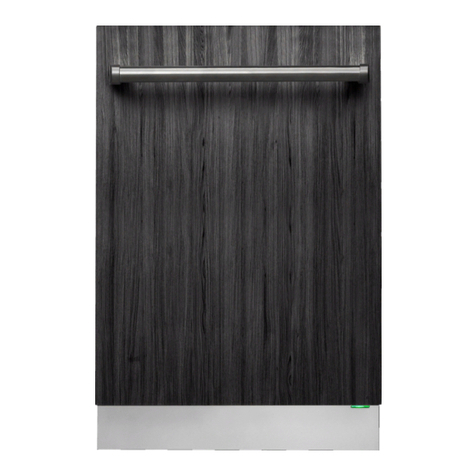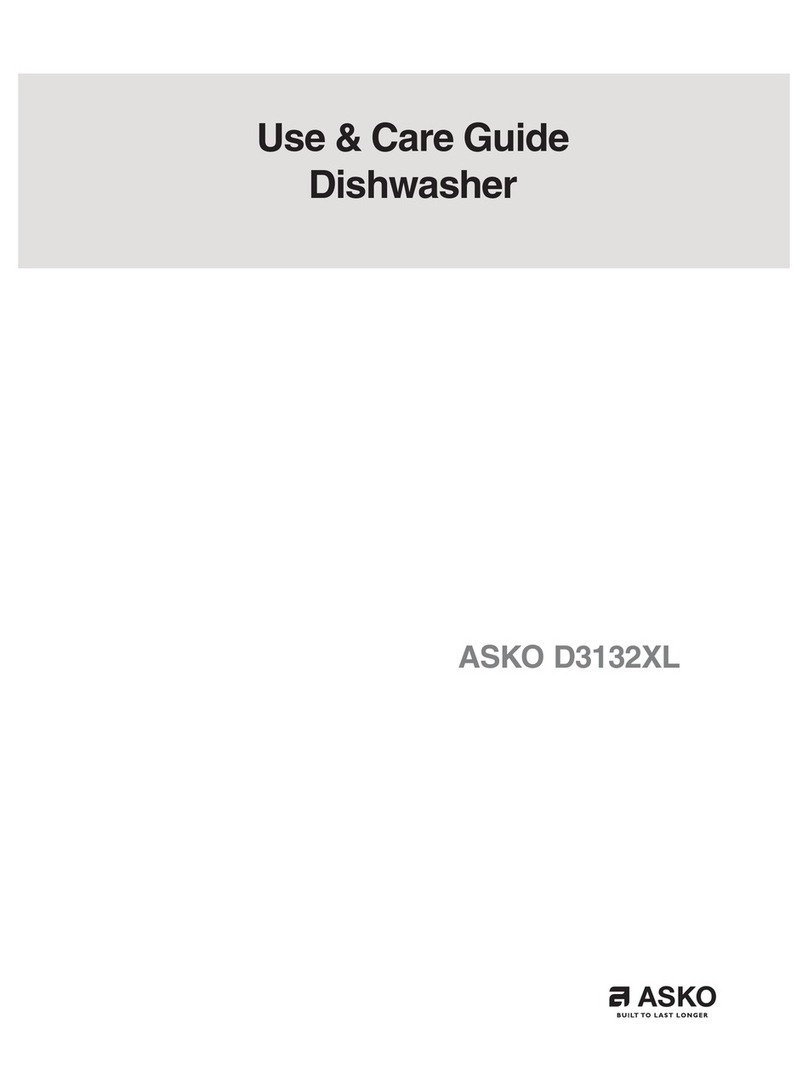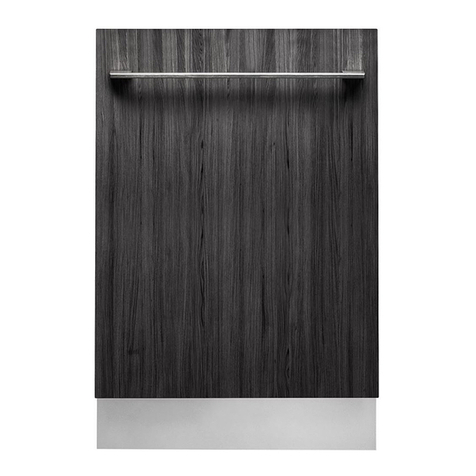NOTE!
Only use powder and liquid dishwasher detergent in the dish-
washer’s detergent compartment. Dishwasher tablets are not
recommended. Washing up liquid must not be used as the
foam that forms prevents the dishwasher from operating effec-
tively.
Commercial dishwasher detergent adapted for automatic dos-
ing systems should not be used in the dishwasher’s detergent
dispensing compartment.
Detergent with high enzyme content
If a detergent with a high enzyme content is going to be used,
we recommend a program with a low temperature for the main
wash and a high temperature for the final rinse. Program A, Pro-
gram B and Program C can be designed according to the busi-
ness’s specific needs. Create a program with prewash, long main
wash at a low temperature (40 °C) and final rinse at a high tem-
perature (60 °C or 70 °C). See “Create program”in section Set-
tings on page 10.
The main power switch
Press and hold the main power switch until the display lights up.
The message “Open to unlock”is shown on the display. Open
the door to activate the panel.
Program selection
Press the Program selector one or more times until the desired
program appears on the display. (The dishwasher is equipped
with programs for different purposes. Certain programs can be
deactivated upon delivery. The process for activating and deac-
tivating programs is described in section Settings on page 10.
See Select programs.)
Quick Wash
Short programs for lightly soiled/rinsed dishes such as glasses
and coffee cups.
Universal
Standard program for normally soiled/scraped dishes. (No dried
leftovers.)
Universal Plus
Efficient program for very dirty dishes with some dried leftovers.
(Not burnt-on food such as in gratin dishes.)
Intensive
Powerful program for very dirty dishes with dried leftovers. (Not
burnt-on food such as in gratin dishes.) This program has maxi-
mum rinsing results, and takes somewhat longer than Universal
Plus.
Wine Glasses
Gentle program for fragile items such as fine glassware.
Beer Glasses
Programe specially adapted for robust beer glasses. No rinse
aid is dispensed during the final rinse. The final rinse is automat-
ically in cold water if connected.
Plastic wash
Program intended for washing plastic items that are dishwasher-
safe. Porcelain and glass can also be washed.
Normal
Use to wash normally soiled load, and even dishes with dried
leftovers, such as plates, serving dishes, cups, glasses and so
on.
For washing normally soiled mixed loads, with the best energy
and water performance, use the Normal program (no options).
If you want to improve the dishwashing and drying result activate
the option Drying . This causes a slight increase in energy
consumption.
Pots and Pans
Program for very dirty dishes, such as pans, casserole dishes
and oven dishes. If these dishes do not completely fill the dish-
washer, you can add plates and the like.
Quick Wash Sani 1)
Short program for cleaning and disinfecting dishes. The final
rinse has a temperature of over 85 °C for 3 minutes.
Universal Sani 1)
Program for efficient cleaning and disinfecting of dishes. The final
rinse has a temperature of over 85 °C for 3 minutes.
Rinse
Program for rinsing dishes.
Drain
Program for pumping out water, for example in the event of a
program being interrupted.
Program A / Program B / Program C
Programs that can be adapted for specific needs. See “Create
program”in section Settings on page 10.
Selecting Options
To make a selection, press one of the Option buttons. The field
next to the button lights up when the option is activated. The
available options depend on the selected program.
Drying
The option Drying activates a drying period of 15 minutes and
can be selected for programs Quick Wash, Universal, Universal
Plus, Intensive, Wine Glasses, Beer Glasses, Plastic wash and
Pots and Pans. This slightly increases the energy consumption.
When you start a program, the option selected is saved for the
next time you run the same program.
Delayed start
When you select Delayed start, the dishwasher will start 1–24
hours after you press the Start/Stop button.
1 Press the button once to activate Delayed start. Press several
times or hold the button down to set the desired number of
hours. Delayed start including program duration is shown on
the display.
2 Press Start/Stop and the dishwasher counts down 1 hour at
a time and starts after the selected delay.
Press and hold Start/Stop for three seconds if you want to cancel
the Delayed start option.
NOTE!
Remember to press the Start/Stop button to start the program.
1) High setting for the water softener if the program is used frequently. See "Water hardness" in section Settings.
8

